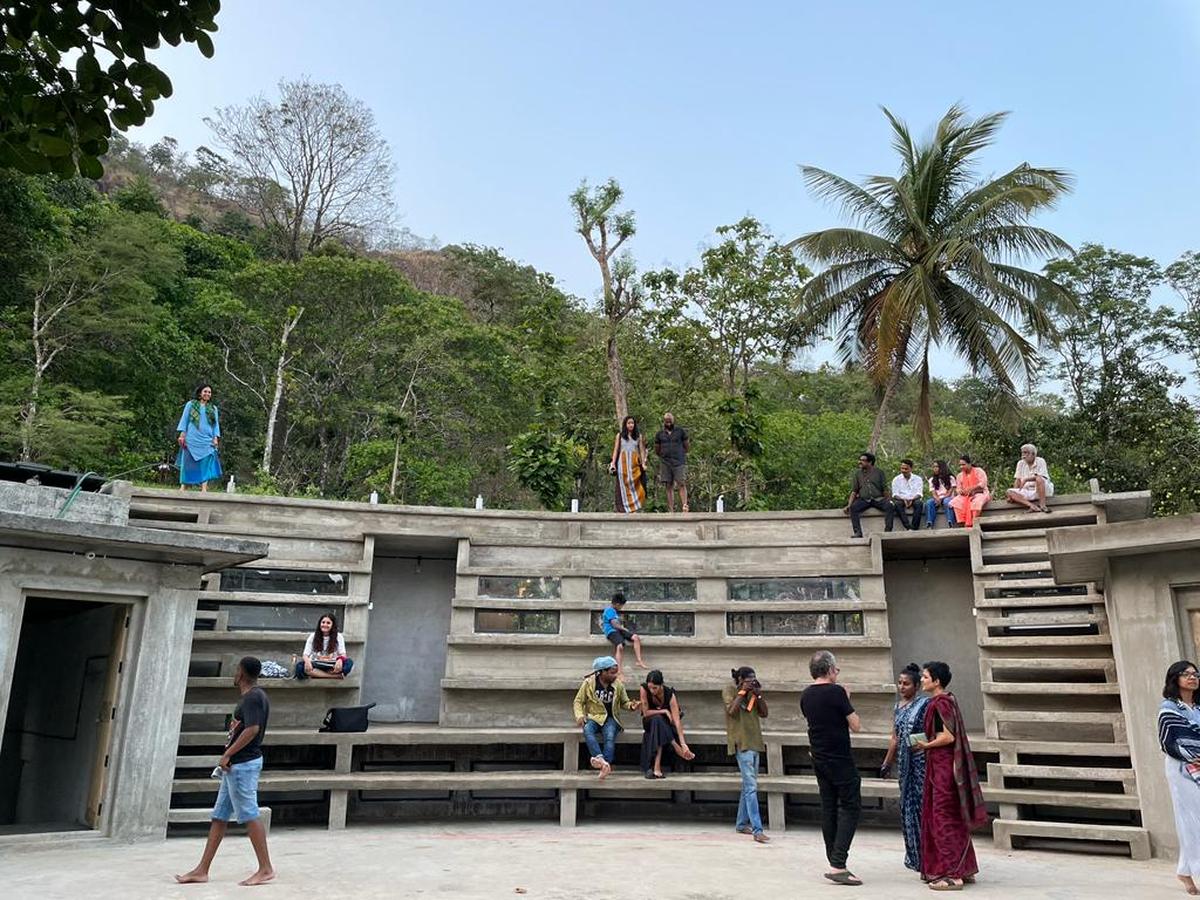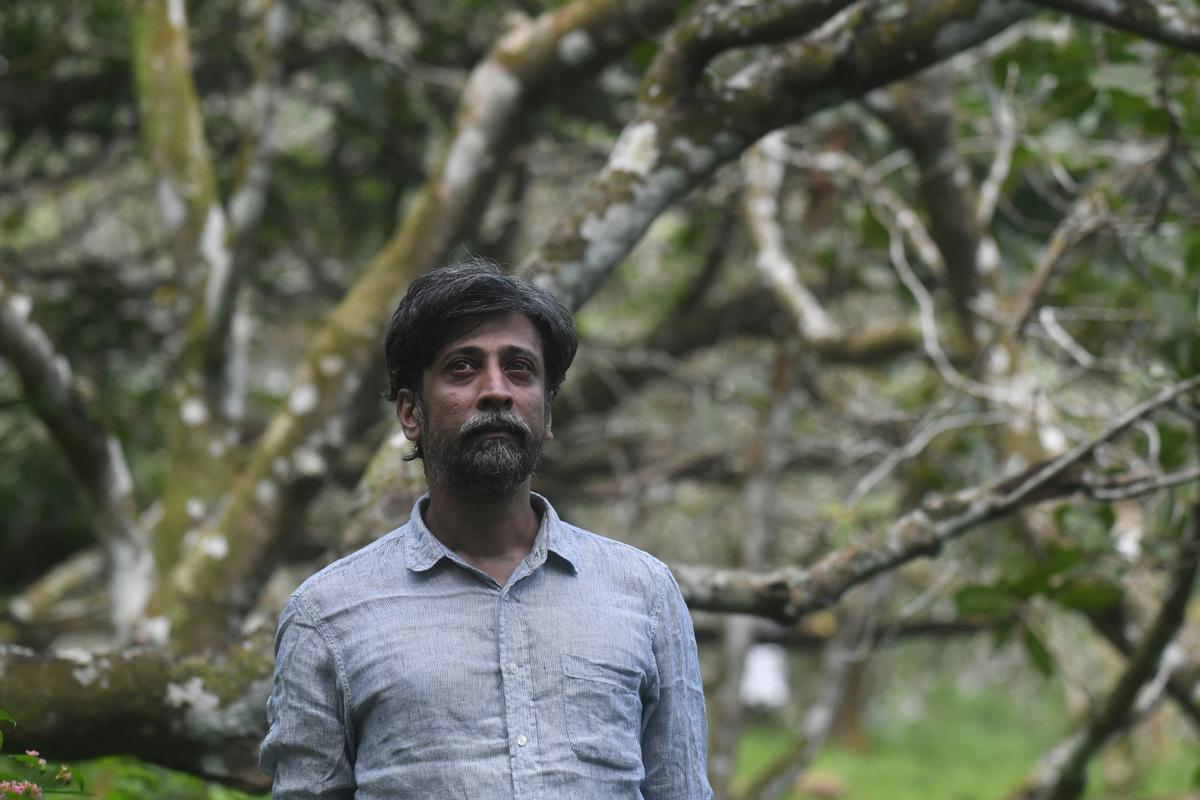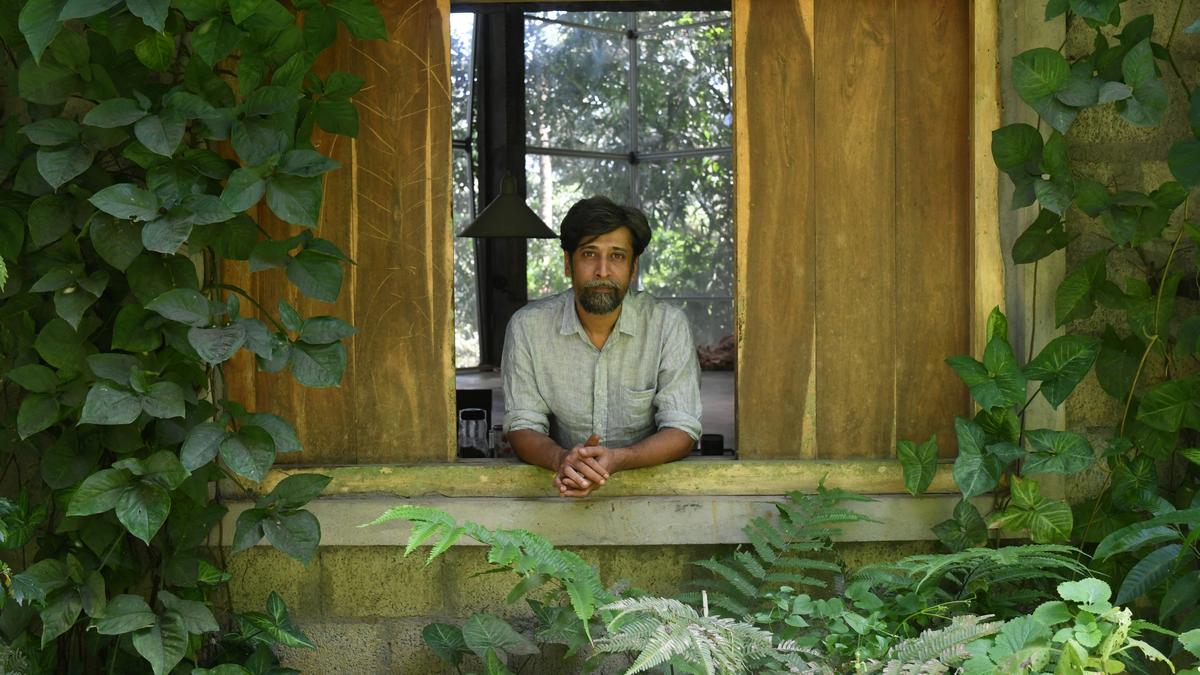Theatre maker and director Shankar Venkateswaran says, “Experience the strongest emotion in silence. It can express as much as movement or mime.” These words resonate in the quiet evenings in the Attappady hills. We are at his venue – Sahyande Theatre – located on a hilltop with a river flowing beneath it, to watch the action unfold. IM TODD-IN MY TIME OF DYINGShankar’s latest work.
Shankar Venkateswaran during the rehearsals of his latest work in my time of Dying at Sahyande Theatre.
The play, a collaboration with German theatre maker Leon Pfannenmuller, has been supported by the Goethe-Institut through a co-production fund. The play has had 20 shows in Europe and three in India. From diary entries and postcards to a steel rod forming part of a leg, the play is laced with imagination but is based on lived experience. German playwright Maria Rössler helped him structure the text. Shankar believes that words are the hardest to find in theatre, especially after the explosion of visual media. “I am trying to get to the deepest point of the meaning of the text, the meaning of words in theatre today and how you can find words that can convince, while still going through real life, while embracing the fictional world of theatre.”

Shaped like a Japanese fan, drawing inspiration from Noh theatre, a form in which Shankar is trained and reflects in some of his work too, Sahyande Theatre aspires to be the world’s first carbon neutral theatre. The building’s design ensures that you don’t need to turn on the lights during the day, with the green roof making fans or ACs irrelevant. “And, we have our own source of water, which will last us for eight months a year and then for the next four months we have to pump water from a well, which is 100 metres down. In the coming years, we are hoping to replace the entire electricity lighting requirements of the theatre using a combination of a solar and windmill,” says Shankar. MIT-trained architect and theatre-maker Kavita Srinivasan
The idea of starting her own space came when she and her Japanese partner Satoko were working on Shankar’s initial work from Delhi and later from Thrissur. Sahyande Makan – Elephant ProjectA highly acclaimed production like his other works The water station of Ota Shogo (2011), 101 Lullabies (2012) and Henrik Ibsen’s when we wake up deadIn Kerala, the venue gets overbooked for any government programme. And, they have to cancel their rehearsals and get no compensation, creating problems for outside artistes. Shankar Nag Theatre Award winner and Ustad Bismillah Khan Yuva Puraskar recipient says, “Being a committed theatre artiste, it requires a certain concentration, the kind of work I do is cultural. Many of my artistes come from all over the world. We work in a residential kind of set up.” Many of his works have found international platforms, and he is also a recipient of the International Ibsen Scholarship 2013 (Teater Ibsen, Norway).
Attappady gave him a piece of land where he could plant his dreams and ideas of theatre. However, once he set up his organisation Theatre Roots and Wings, the inter-culturality of the place impressed him. With the Tamil and Malayalam speaking settler community and three indigenous communities speaking different languages, this small piece of land was very multicultural. “All this seemed to be the most fertile place to pursue my cultural practice, which at that time was linked to Japan, Germany and Singapore,” recalls Shankar.
Interculturality in her vision stems from her training in multicultural art forms from the Intercultural Theatre Institute (ITI). “ITI taught me how to work with artistes with whom you have no common bond. But if you have the will, you can still work and make it worthwhile.”
Shankar is working with local singers in Attappady to revive a folk performance called Madurai Veeran Kuthu. But he firmly believes that his work with them is not for the market. “They sing to liven up their day, and make work more enjoyable. For people here, the relationship between art and life means something different; it is not about commodifying or consuming something.”

Kochi, Kerala, 18/08/2022: For Frontline: Theatre director Shankar Venkateswaran in conversation with The Hindu Frontline at Attappady. Photo: Thulasi Kakkat/The Hindu | Photo credit: Thulasi Kakkat
The resilience shown by theatre makers like them has kept our collective faith alive during the pandemic, which was a dire situation as there was nowhere to seek support to keep venues afloat. But it also turned Satoko and Shankar into beekeepers. “We learnt beekeeping through YouTube tutorials. We produced honey. Hopefully in the coming years it will become a resource that can independently run this theatre space. The bees bring honey, honey brings money and money runs the theatre. It also contributes to the ecology.”
One cannot forget his absence from the online digital theatre experiment, which was all the rage at the time. “Even at that time, I had a lot of doubts and questions about the online explosion. I put up one of my pieces online, but as soon as the pandemic was over, we moved away from the digital medium. People were too eager to meet. Performing is in itself a human instinct. It is human to gather and tell stories, talk and socialise.” Sahyande Theatre, which today invites artists from across the world to create theatre on a unique hilltop in a forest in Kerala, is proof of this.
